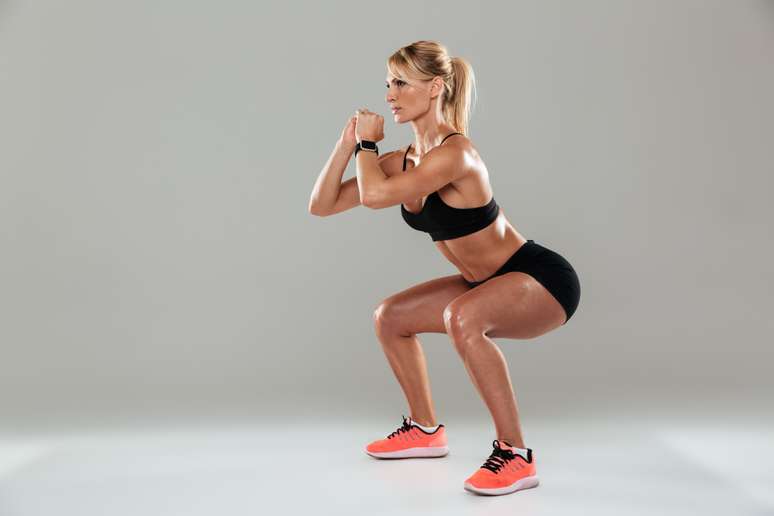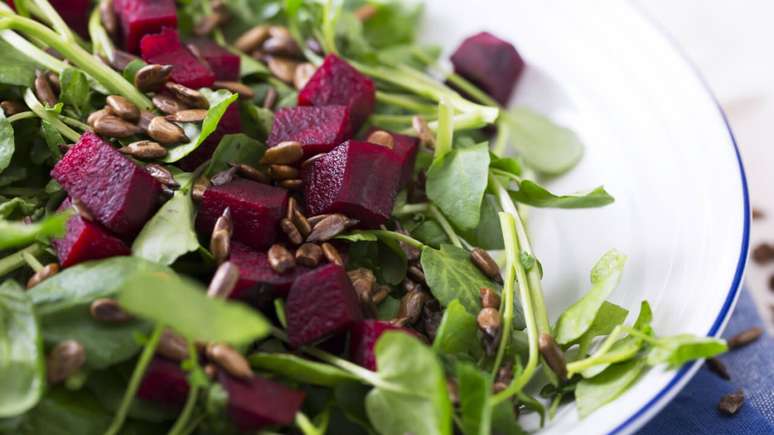It’s a functional exercise that can increase calorie burn, help prevent injuries, strengthen your core, and improve balance.
The free squat is a fundamental movement that requires multiple joint and muscle integrations. As a dynamic strength training exercise, the squat requires multiple upper and lower body muscles to work together simultaneously.
html[data-range=”xlarge”] figure image img.img-a20614b53d788e555f3f7100b07c6f5d2rw2gh8a { width: 774px; height: 516px; }HTML[data-range=”large”] figure image img.img-a20614b53d788e555f3f7100b07c6f5d2rw2gh8a { width: 548px; height: 365px; }HTML[data-range=”small”] figure image img.img-a20614b53d788e555f3f7100b07c6f5d2rw2gh8a, html[data-range=”medium”] figure image img.img-a20614b53d788e555f3f7100b07c6f5d2rw2gh8a { width: 564px; height: 376px; }HTML[data-range=”small”] .article__image-embed, html[data-range=”medium”] .article__image-embed {width: 564px; margin: auto 0 30px; }
Adding squats to your workouts can help you increase exercise performance, reduce your risk of injury, and make you move more easily throughout the day. But these are just some of the advantages.
Read on to learn more about the benefits you can get by performing squats and the variations you can try to gain even more benefits.
WHICH MUSCLES ARE WORKED IN THE FREE SQUAT
If there’s one exercise that has the ability to challenge the most muscles in your body, it’s the squat. The most obvious target muscles are found in the lower body, but several muscles above the waist must also be used to perform this compound exercise correctly.
The lower muscles involved in a squat include:
- gluteus maximus, minimus, and medius (glutes)
- quadriceps (front of thigh)
- hamstrings (back of the thigh)
- adductor (groin)
- hip flexors
- calves
In addition to the lower body, the squat also targets the core muscles. These muscles include the rectus abdominis, obliques, transversus abdominis, and erector spine.
WHAT ARE THE ADVANTAGES OF FREE SQUATS
Strengthens the abdomen
Having strong core muscles can make daily movements easier. Not only that, a strong core can improve balance, relieve lower back pain, and even make it easier to maintain good posture.
A 2018 study comparing the activation of the abdominal muscles from a plank to a squat found that the squat resulted in greater activation of the muscles that support the back.
Reduces the risk of injury
By strengthening your lower body muscles, you’ll be able to perform full-body movements with correct form, balance, range of motion, and posture.
Additionally, incorporating squats into your overall exercise routine also helps strengthen your tendons, ligaments, and bones, reducing your risk of injury.
burn calories
Burning calories is often accompanied by aerobic exercise such as running or cycling. But performing high-intensity compound movements like squats can also burn major calories.
“How Many Calories Does Free Squat Burn”
To find out how many calories are burned per minute = 0.0175 x MET x weight.
The MET is the intensity. If you can carry on a conversation while squatting, you’re probably performing the activity with light to moderate effort. This would give you an MET value of 3.5.
If you feel short of breath while squatting, your effort will be more vigorous. The MET value can increase up to 8.0.
For example, a 75kg person doing vigorous squats will burn:
0.0175 x 8 x 75 = 10.5 per minute.
If you squat for 5 minutes then:
10.5×5 = 52.5
.
Strengthens thighs and buttocks
Strength training exercises like squats can help strengthen and tone lower body muscles. When these muscles are in good shape, you’ll find that you can move more comfortably, with less pain, and that everything from walking to bending over to exercising is easier to do.
Increases athletic ability and strength
Adding squats to your workout can help you build explosive strength and speed which, in turn, can help improve your athletic performance.
It can be done anywhere
Squats can only be performed with body weight. They can also be performed with weights, such as dumbbells, barbells, kettlebells, or medicine balls, or with resistance bands or yoga balls.
HOW TO DO THE FREE SQUAT

This most basic type of squat uses only your body weight for resistance. When you start out, the pressure of the squat should be applied almost evenly to your feet. Imagine a triangle on the ball of your foot, with pressure applied equally to three areas: the ball of the foot, just behind the big toe, the ball of the foot, behind the little toe, and the heel.
- Start with your feet slightly wider than hip-width apart and your toes pointing slightly outward.
- Keeping your chest up and out and putting pressure on your feet as well, engage your abs and shift your weight to your heels as you push your hips back.
- Lower and squat until your thighs are parallel to the floor. If you can, squat further.
- Keep your chest out and your core engaged as you push your heels back to the starting position. Squeeze your glutes into the top position.
- Perform 10-15 repetitions. Work up to 3 sets.
VARIATIONS AND THEIR ADVANTAGES
Switching up your basic squat allows you to target different muscle groups. It also helps with motivation so you don’t get bored performing the same move over and over again.
Before moving on to squat variations, make sure you’ve mastered the basic squat movement. These exercises are more challenging and require more strength, flexibility, and core activation.
Barbell Squats
It follows the traditional movement of the squat and adds resistance to the shoulders with a barbell. It is often considered the “gold standard” when it comes to enhancing athletic performance, requiring the coordinated interaction of multiple muscle groups.
The back squat emphasizes the glutes and hips while targeting the quads.
Squat with shoulder press
You can use a dumbbell or medicine ball overhead for this squat.
This variation engages the core, particularly the lumbar region. It also works the muscles of the upper back, shoulders and arms.
Your range of motion will be slightly different with this squat, so pay close attention to form.
Squat with explosion
With jump squats you don’t need any equipment. It’s a plyometric movement, which means it’s a powerful aerobic exercise that requires you to exercise your muscles to their maximum in a short amount of time.
The power squat targets the glutes, quads, hips, and hamstrings while getting your heart rate up.
Since this variation puts more stress on your joints, it’s important to have healthy knees, hips, and ankles if you want to attempt this move.
SAFETY TIPS
While it’s generally a safe exercise when performed correctly, there are some safety precautions to remember when performing squats.
Simply bend down as low as you can comfortably. When you start to feel discomfort in your hips or knees, stop and use that as an end point.
Make sure you have a solid foundation. Most squat exercises require you to start with your feet slightly wider than shoulder-width apart. Using a narrower stance puts strain on your outer thigh muscles, but it also decreases core stability and puts extra pressure on your knees.
Keep your eyes straight ahead. While it may seem natural to look down when squatting, you should keep your eyes straight ahead. To help you with this, choose a point in front of you to focus on. This can help keep your neck in a neutral position.
Keep your posture upright. Avoid hunching your shoulders or back. Concentrate on keeping your spine straight and in a neutral position, with your head neutral, not looking up or down.
Contract your core. Keep your core muscles engaged throughout the movement. Think of these muscles as an internal weight belt that holds everything in place.
Source: Terra
Ben Stock is a lifestyle journalist and author at Gossipify. He writes about topics such as health, wellness, travel, food and home decor. He provides practical advice and inspiration to improve well-being, keeps readers up to date with latest lifestyle news and trends, known for his engaging writing style, in-depth analysis and unique perspectives.









